Past and Future of Nippon Subculture ~No.3 The Fall of Kamigami Ⅰ~
こんにちは、コバヤシです。今回はなんとなく前回からの続きの話です。もし前回を読んでいない方は是非読んでみてください(https://thatisgood.jp/taketokobayashi002/)。
「八百万の神」という言葉が示すとおり、日本では遍くものにカミ、超自然的な力が宿っているという考え方があります。『古事記』には三百余りの神が登場しますが、それは日本にはそれより遥か以前からもっと多くの名もなきカミガミが存在していたという事実の片鱗です。四季が移ろい、豊かな自然があり、現代人よりもより近しく自然と接していた縄文人は多くのカミガミ=精霊と交流していたはずです。縄文時代の土偶は現代的な視点から見ると異形なモノに映ります。そのカタチが何を意味するのかは、今となっては想像することしかできません。遮光器土偶(写真1)は目にあたる部分がイヌイット(エスキモー)が雪中行動する際に着用する遮光器(スノーゴーグル)のような形をしていることからこの名称がつけられましたが、よく聞かれる俗説として宇宙人(もしくはEVAスーツ)を模しているというものがあります。また産まれたての赤子とそれを産んだ母体の複合体ではないかというもの等様々な説がありますが、僕は縄文土偶は自然のエネルギー=精霊をキャラクター化したものだと思っています。
Hello, this is Kobayashi. This time is continuation-ish from last time. If you haven’t read the previous article, please do so (https://thatisgood.jp/en/taketokobayashi002/).
As the term “Yaoyorozu no kami” (In Shintoism, it’s believed a god exists for everything.)implies, in Japan, there is a belief that all things are inhabited by Kami, supernatural powers. In the Kojiki (Records of Ancient Matters, the oldest history/mythology book in Japan), more than three hundred gods appear, but this is a glimpse of the fact that many more nameless kami existed in Japan long before that. With the changing seasons and abundant nature, the Jomon people must have interacted with many kamigami = spirits, as they were in closer contact with nature than we are today. Dogu, the clay figurines of the Jomon period seem in an alien shape from a modern perspective. We can only imagine what the shapes and patterns mean now. The Shakouki Dogu (Photo1 : Goggle-eyed clay figure) was named after its eyes, which are shaped like the snow goggles worn by the Inuit (Eskimos) when walking in the snow, but a popular meme is that it resembles an alien (or EVA suit). There are also various theories that the figure is a composite of a newborn baby and the mother who gave birth to it, but I believe that the Jomon Dogu (Jomon Clayfigurine) is a characterization of nature’s energy = spirit.
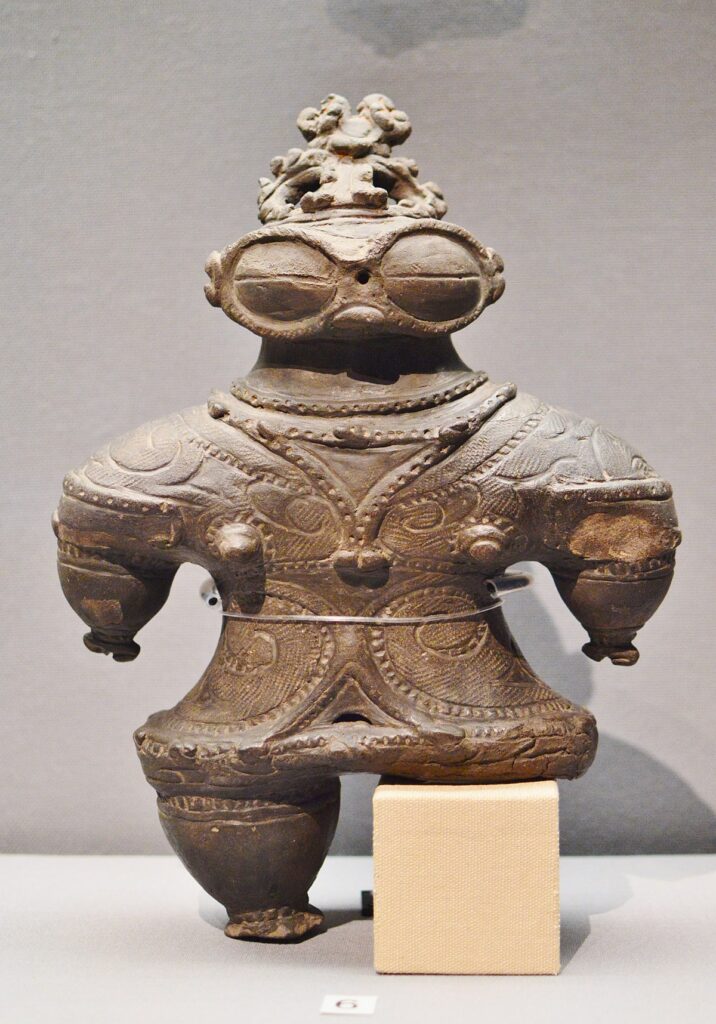
目には見えない存在を石や木片に刻むという行為は古くは旧石器時代から行われています。いわゆる“ライオンマン”もしくはライオンレディ(Löwenmensch)と呼ばれている象牙の像は1939年にドイツのシュヴァーベン・アルプのローネタール(はぐれ谷)にあるホーレンシュタイン・シュターデル(英語版)の洞窟(ホーレンシュタイン山のシュターデル洞窟)で発見されました。(写真2) 日本の縄文時代、この人の身体にライオンの頭部を持つ像は約32,000年前のものとされ、現在発見されているものでは世界最古の動物形象彫刻です。
The act of carving invisible beings into stone or wood has been practiced since the Paleolithic period. The so-called “lion man” or “lion lady” (Löwenmensch), an ivory statue, was discovered in 1939 in the Stadel Cave on Mt. Hohlenstein in the Lönetal (stray valley) of the Swabian Alps in Germany. (Photo 2) Jomon Period in Japan, The statue with a lion’s head on a human body is believed to be about 32,000 years old, making it the world’s oldest animal figurine sculpture discovered today.
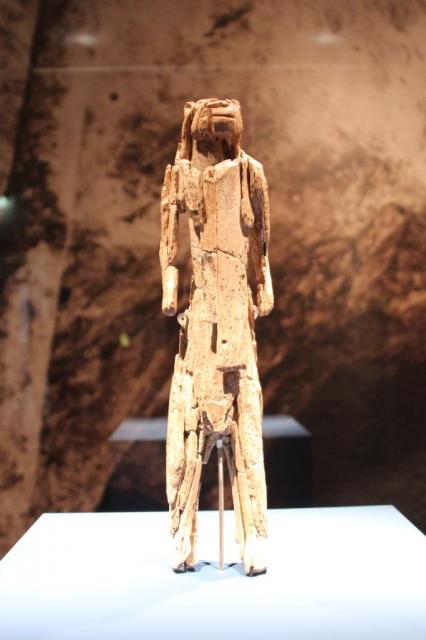
ククテニ文化は現在のルーマニア・モルドバ・ウクライナに当たる、カルパティア山脈からドニエプル川付近までの地方で、紀元前5500年~2750年頃に栄えました。この縄文時代中期とほぼ時を同じくする文化においても女神(地母神)が信仰されていたとされ、蛇、もしくは鳥の頭を持つ女神の石像や土偶が発見されています。(Photo 3)考古学者マリヤ・ギンブタスによればククテニ文化(トリポリエ文化)は、「クルガン文化」を担うインド・ヨーロッパ語族民が東方のステップ地帯からやってきて征服する前の「古ヨーロッパ」の代表的文化で、生活様式は、農耕と牧畜を中心とし、狩猟や漁労を交えたとのこと。階級の分化はほとんど見られず、集落全体が数十年おきに故意に焼かれ作り直された例が多く知られています。この目的は不明ですが、集落の「死と再生」を意味する宗教的儀式ではないかとの考えもあるようです。これは僕の意見ですが、女神信仰や母系社会という共通点をもつ縄文文化と古ヨーロッパ文明の間にはなにかシンクロニシティ的な繋がりを感じます。
The Cucuteni culture flourished from 5500 to 2750 B.C. in the region from the Carpathian Mountains to the Dnieper River, which is present-day Romania, Moldova, and Ukraine. It is believed that the goddess (earth mother goddess) was also worshipped in this culture, which coincided with the middle Jomon period, and stone statues and clay figures of the goddess with snakes or birds’ heads have been found. (Photo 3) According to archaeologist Marija Gimbutas, the Cucuteni culture (Tripolye culture) was a representative culture of “Old Europe” before the conquest of the Indo-European speaking peoples of the Kurgan culture from the eastern steppes and the lifestyle was mainly agricultural and pastoral, with some hunting and fishing.There is little evidence of class differentiation, and many examples are known of entire villages that were deliberately burned and rebuilt every few decades.The purpose of this is unknown, but some people think it may be a religious ritual that signifies the “death and rebirth” of the village.This is just my opinion, but I feel that there is some kind of synchronicity between the Jomon culture and the Paleo-European civilization, which share a common belief in goddesses and a matriarchal society.
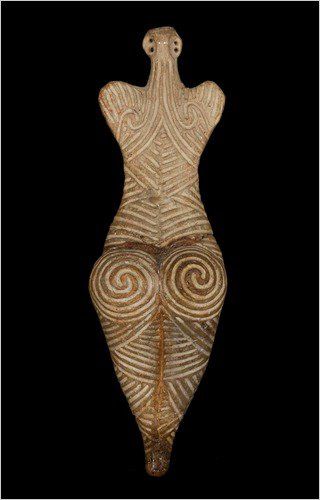
また話が逸れましたがw、さらに時代を下ればホピ族のカチーナ(写真4)等、精霊、カミのキャラクター化は枚挙にいとまがありません。ヒトにとって超越的な存在を可視化、具象化することは本能なのだと思います。ヒトは旧石器時代より始める認知革命により自己を客観的に認識することができるようになりました。そのことにより「計画の立案」、「道具の発明と使用」が可能になり人類の文明を今あるものにまで発展させました。しかしその代償としてヒトは他の動植物が持っている自然とのリンクを失ってしまいました。本来動植物はDNAに刻まれた情報どおりに行動し、己が何者であるか、どのように行動するべきかということを生まれながらに知っています。ヒトだけが己がどのように生き、何者になるか?という“選択の自由”を持っているのです。しかし、その自由は他者との、自然との隔絶という諸刃の剣の上に成り立っています。カミのキャラクター化はその空虚を埋めるための一つの手段ではないかと僕は考えます。
I’m getting off the subject again lol, but further down the line, the characterization of spirits and kami is endless, such as Kachina of the Hopi tribe (Photo 4). I believe that it is an instinct for humans to visualize and materialize transcendent beings. The cognitive revolution that started in the Paleolithic era has enabled humans to recognize themselves objectively. This has enabled us to plan, invent and use tools, and develop our civilization to what it is today. However, in return, humans have lost the link with nature that all other plants and animals have. Originally, plants and animals behaved according to the information engraved in their DNA, knowing from birth who they were and how they should behave. Only humans have the “freedom of choice” to decide how to live and who to become. However, this freedom is built on the double-edged sword of separation from others and from nature. However, this freedom is built on the double-edged sword of separation from others and from nature. I believe that the characterization of Kami is one of the ways to fill this void.
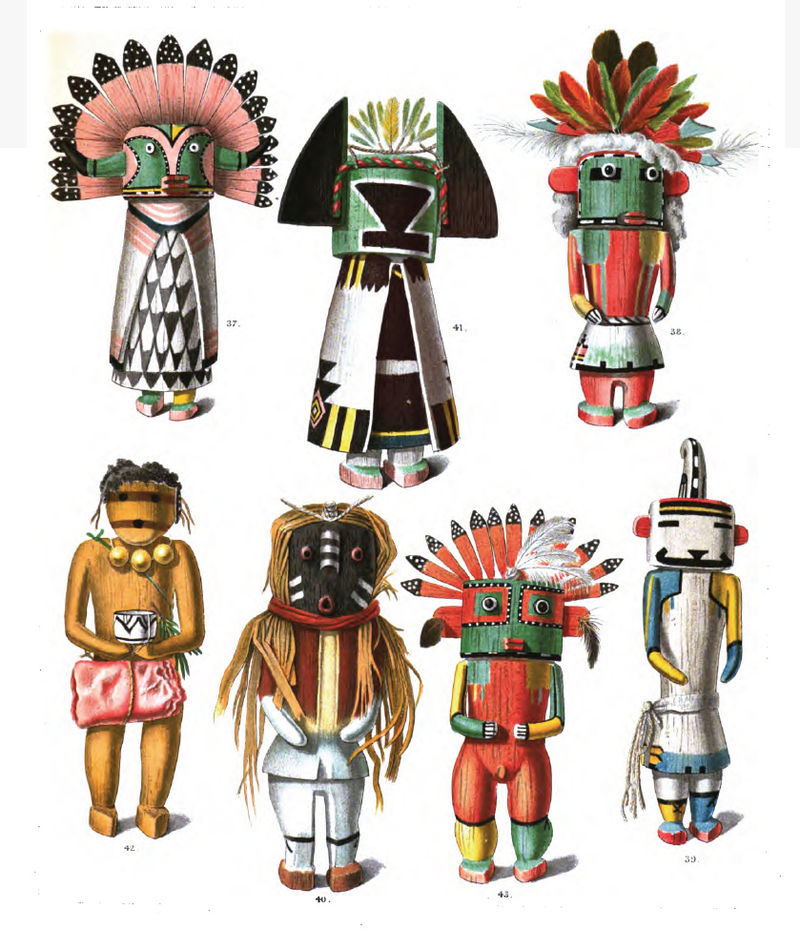
さて、前述したククテニ文化等で信仰されていた地母神、古き神々の文化はヨーロッパ東方からやってきた騎馬民族によって滅ぼされ、征服されてしまいます。古き神々は完全に忘れされてしまったわけではなく、現代にまで伝わるギリシア神話、北欧神話の中で巨人、怪物としてその名残を残しています。ギリシア神話に登場するティターン(神族)はオリュンポスの神々に先行する古き神々です。天、雷を象徴するゼウスが古き農耕の神であるティターンのクロノス神を滅ぼして新しい世界を統べたというストーリーは、騎馬民族が母系社会を滅ぼして現在のヨーロッパの基盤となる文化を作ったということを象徴していると思います。また古き神々にはテュポーン(大地母神ガイアとタルタロスとの間の子。神とも怪物ともいわれる巨人。同神話体系における最大最強の怪物で、神々の王ゼウスに比肩するほどの実力をもち、そのゼウスを敗った唯一の存在でもある。腿から上は人間と同じであるが、腿から下は巨大な毒蛇がとぐろを巻いた形をしているという)やエキドナ(ギリシア神話に登場する怪物である。上半身は美女で下半身は蛇で背中に翼が生えた姿をしている。「蝮の女」がその名の意味)等、蛇と関連するものが多いのも興味深いです。現在では蛇は忌むものとされがちですが、縄文土器の文様にもなっているように、太古においては蛇は再生の象徴とされていたのではないでしょうか。天空の神を祀る父権社会は権力を一点へと集中させます。それは文明を加速させる原動力にもなったわけですが、文明が成熟した現代においては、より古く平和的な母系社会への回帰、もしくはそこから学ぶことが多くあるはずです。
なかなか現代にまで辿り着きませんw続きはまた次回で。
Well, the above culture of the earth mother goddess and the old gods that were worshipped in the Cucuteni culture and other cultures were destroyed and conquered by the cavalry from the east of Europe. However, the ancient gods have not been completely forgotten, and they still remain as giants and monsters in Greek and Norse mythology to this day. The Titans in Greek mythology are the ancient gods who preceded the Olympians. The story of Zeus, who symbolized the heavens and thunder, destroying the old god of agriculture, Cronus of Titan, to rule over the new world symbolizes how the cavalry people destroyed the matriarchal society and created the culture that is the foundation of Europe today. In the ancient gods, there is also Typhon (the son of Gaia, the earth mother goddess, and Tartarus. He is a giant who is said to be both a god and a monster. He is the strongest and most powerful monster in the same mythological system, and is the only being who has defeated Zeus, the king of the gods. From the thighs up, he looks like a human, but from the thighs down, he looks like a giant viper coiled in a spiral.) and Echidna (a monster in Greek mythology, a beautiful woman on the top half of her body and a snake on the bottom half with wings on her back. The meaning of her name is “mamushi=poison snake woman.”) It is also interesting to note that many of them are related to snakes. Nowadays, snakes are often regarded as an abomination, but as seen in the patterns on Jomon pottery, snakes may have been a symbol of rebirth in ancient times. A paternalistic society that worships a god in the sky concentrates power to a single point. It was also the driving force that accelerated civilization, but in today’s mature civilization, there is much to be learned from or a return to the older and more peaceful matriarchal society.
I can’t quite get to the present day, but I’ll post more next time lol
(画像出典 Image source)
写真1 Photo 1
https://ja.wikipedia.org/wiki/%E9%81%AE%E5%85%89%E5%99%A8%E5%9C%9F%E5%81%B6
写真2 Photo 2
https://www.ab-road.net/europe/germany/ulm/guide/09705.html
写真3 Photo 3
https://twitter.com/momokanazawa/status/1066870227646836736/photo/1
写真4 Photo 4
https://ja.wikipedia.org/wiki/%E3%82%AB%E3%83%81%E3%83%8A#/media/%E3%83%95%E3%82%A1%E3%82%A4%E3%83%AB:Kachina_dolls.jpg
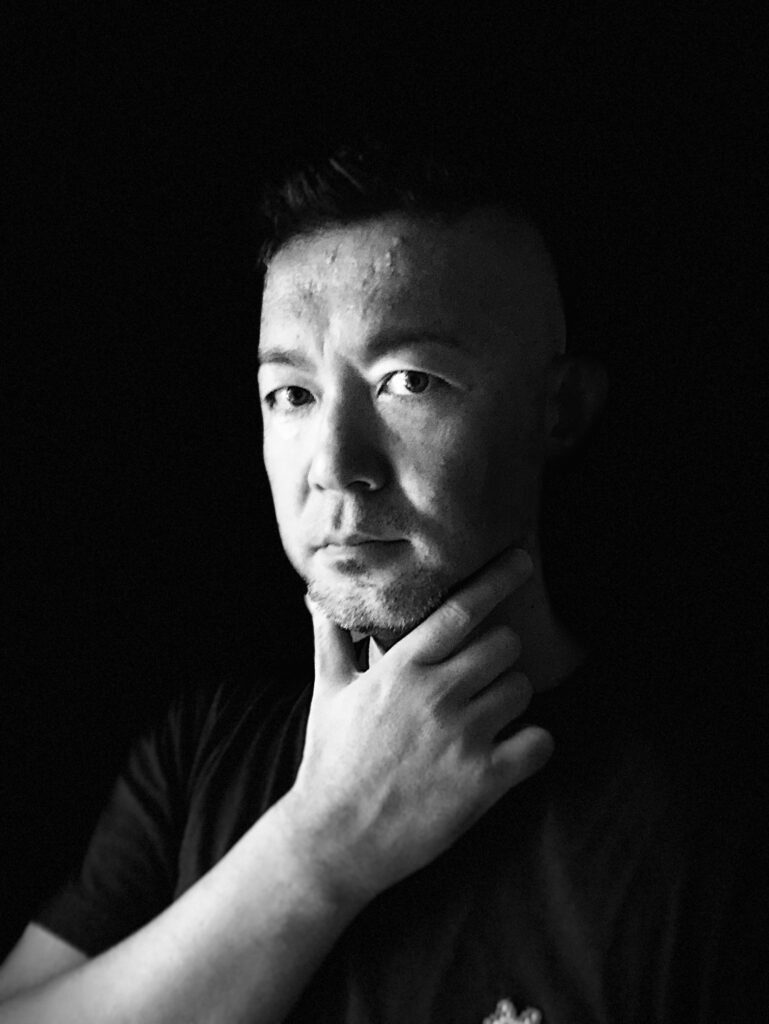
小林 武人 ポストデジタル・アーティスト
Taketo KOBAYASHI
Post-digital artist
ARTSTATION
Taketo Kobayashi (artstation.com)
Instagram ID
@humanoise
NPO法人JOMONISM 代表
https://humanoise.artstation.com
慶應義塾大学 環境情報学部卒。東京工科大学クリエイティブ・ラボ、株式会社ゴンゾを経てフリーランスに。現在は“ポストデジタル・アーティスト”として、CGや3Dプリント等のデジタルツールを“筆”として使いこなし、立体作品から映像まで幅広く制作。海外でも積極的に活動しており、美術家 坂巻善徳 a.k.a. senseとのコラボレーションプロジェクト“XSENSE”では、デジタル作品をストリートアートに活かし、ミューラル(壁画)を制作(コロラド州、デンバー)。また、独自の世界観のアニメーションを舞台美術として使い、コンテンポラリー能劇団とコラボレーションで公演も行った(サンフランシスコ、デンバー)。
自身の作品制作の他に、NPO法人JOMONISMが行う”ARTs of JOMON”展のキュレーションも担当。縄文文化から影響を受けた現代美術作家を世界に紹介し続けている(青森県立美術館、スパイラルガーデン、デンバー国際空港、クアラ・ルンプール等)。
目に見えないモノ、感情、エネルギー、意識の次の次元…等をカタチにすることがミッション。
現在はシンガポール在住
職歴・作品履歴(抜粋)
2004年
TVアニメーション「岩窟王」:背景デザイン、モデリング担当
2005年
スズキ「バーグマン」WEBプロモーション:バーグマン、モデリング担当
2007年
NHK アニ・クリ「火男(ヒョットコ)」:デザイン、モデリング担当
2012年
「MYSTICAL ABYSS」
アメリカ、サンフランシスコ、コンテポラリー能劇団Theatre of Yugenの公演、Mystical Abyss でオリジナルアニメーション制作、ライブプロジェクション担当
2013年-
アメリカ、デンバー、Art Across Cultures, Hope Onlineなどと共同で公演に参加。デンバーアート・ミュージアム等でアニメーションのプロジェクションを担当
2014年
2月 NPO法人JOMONISM企画「ARTs of JOMON展」@青森県立美術館、キュレーション担当
5月 シンガポール南洋工科大学3DPコンペティション参加。カンファレンス招待
11月 企業コラボーレションアート参加:オークリーストア原宿店にて作品展示
2015年
1月 NPO法人JOMONISM企画「ARTs of JOMON展」@スパイラルガーデン、キュレーション担当
2017年
“ARTs of JOMON -Hyper Subculture-” 展 キュレーション担当
伊勢丹 the ジャパンストア、クアラルンプール、マレーシア
2018年
”YouFab Exhibition – Imagination Manifests”@青年廣場 HongKong “More Than Human”プロジェクト、3Dプリント義足を展示
2019年
グループ展『童心』出展 銀座ホワイトストーン・ギャラリー
2020年
「Lights to the Night」アーティストに選出。シンガポール、アジア文明博物館にプロジェクション・マッピング
受賞歴等
オリジナルアニメーション『祭』(2010)
シーグラフ・アジア アニメーションシアター入選
YAOYOROZシリーズ『薬師如来』(2013)
3Dプリント用3DCG作品。日本図学会モデリングコンテスト、入賞
『SC1-EXP』(2014)
3Dプリント作品に映像をプロジェクション・マッピングしたインタラクティブ作品。
逗子国際プロジェクション・マッピング・フェスティバル、グランプリ
More Than Human『type-Unicorn』(2015)
3Dプリント義足。Ufab Global Creative award、ファイナリスト
“Eisen Herz”(2016)
構造計算を用いた3Dプリントミニ四駆カヴァー
Ufab Global Creative award、ファイナリスト
Taketo Kobayashi
Post-digital artist
ARTSTATION Taketo Kobayashi (artstation.com)
Instagram ID @humanoise
After having experience of 3D graphics and animation at Tokyo Institute of Technology creative laboratory, and Gonzo Co., Ltd., Taketo started his own project as an artist. Using digital technology like CG, 3D printing as his “brush”, Taketo creates a wide variety of artworks from 3D printed sculpture to animation. In a collaboration project XSENSE, Taketo utilizes CGI in street art to create murals(Denver, CO, USA), also using his unique style animation for stage design and collaborated with contemporary Noh theatrical group. In addition to creating his own artworks, Taketo curates the group art show “ARTs of JOMON” hosted by Japanese non-profit JOMONISM, keep introducing contemporary artists/artworks influenced by ancient Japanese Jomon culture.(Aomori Museum of Art / Spiral Garden / Denver International Airport / Kuala Lumpur)
It is Taketo’s mission to make invisible things, emotions, energy, next dimensions of consciousness into “shapes”.
Project/Art history(excerpt)
PROJECTS Digital G-O-D, UltraSuperNew gallery, Singapore, Jan 2020
Haw Par Villa RE•MIX
Chinese Cultural Centre, Singapore , Jan 2020
”Light to Night Festival” Projection mapping at Asian Civilization Museum, Singapore , Jan 2020
A SIGN OF THE TIMES EXHIBITION, Singapore , Jan 2019
”ARTs of JOMON” exhibit @ISETAN KL, Malaysia , Aug 2017, curation&direction
“Colorado Crush”, a mural festival in Denver, CO. Sept 2016, created artwork
“DMS” Collaboration with Canon June 2015, created&exhibited 3D printed prosthetic leg
”Oakley Exhibition” Exhibited artworks at Oakley store Harajuku, Tokyo, Oct 2014
AWARDS “Eisen Herz” Ufab Global Creative award Finalist. 2016. 3D printed cover for “Tamiya mini 4WD” using generative design
“More Than Human type-Unicorn” a 3D printed prosthetic leg. Ufab Global Creative award Finalist. 2015
“SC1-EXP” Zushi International Projection Mapping Competition, Grand Prix. 2014
“Yakushi-Nyorai”(2013)
3DCG model for 3D printing. Winning work at Digital modeling competition held by Japan Society for Graphic Science
Original CG animation ‘Matsuri’(May 2010)
Design, modeling, production coordination. A CG animation based on Japanese ‘Jomon’ culture. Created for promotion of Aomori Prefecture. Accepted at Siggraph Asia 2010. (On VIMEO: https://vimeo.com/25144961)